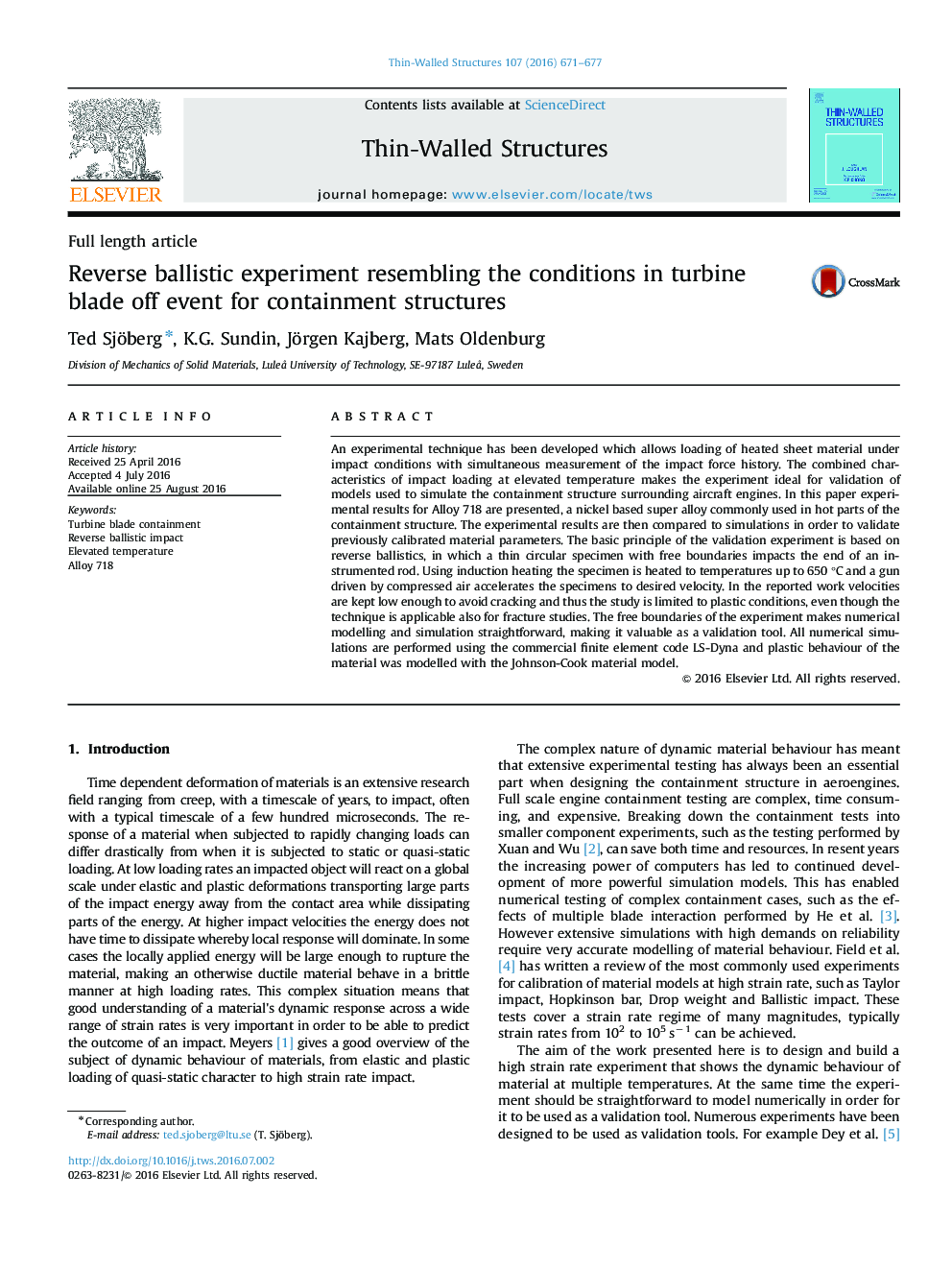| Article ID | Journal | Published Year | Pages | File Type |
|---|---|---|---|---|
| 6779043 | Thin-Walled Structures | 2016 | 7 Pages |
Abstract
An experimental technique has been developed which allows loading of heated sheet material under impact conditions with simultaneous measurement of the impact force history. The combined characteristics of impact loading at elevated temperature makes the experiment ideal for validation of models used to simulate the containment structure surrounding aircraft engines. In this paper experimental results for Alloy 718 are presented, a nickel based super alloy commonly used in hot parts of the containment structure. The experimental results are then compared to simulations in order to validate previously calibrated material parameters. The basic principle of the validation experiment is based on reverse ballistics, in which a thin circular specimen with free boundaries impacts the end of an instrumented rod. Using induction heating the specimen is heated to temperatures up to 650 °C and a gun driven by compressed air accelerates the specimens to desired velocity. In the reported work velocities are kept low enough to avoid cracking and thus the study is limited to plastic conditions, even though the technique is applicable also for fracture studies. The free boundaries of the experiment makes numerical modelling and simulation straightforward, making it valuable as a validation tool. All numerical simulations are performed using the commercial finite element code LS-Dyna and plastic behaviour of the material was modelled with the Johnson-Cook material model.
Keywords
Related Topics
Physical Sciences and Engineering
Engineering
Civil and Structural Engineering
Authors
Ted Sjöberg, K.G. Sundin, Jörgen Kajberg, Mats Oldenburg,
